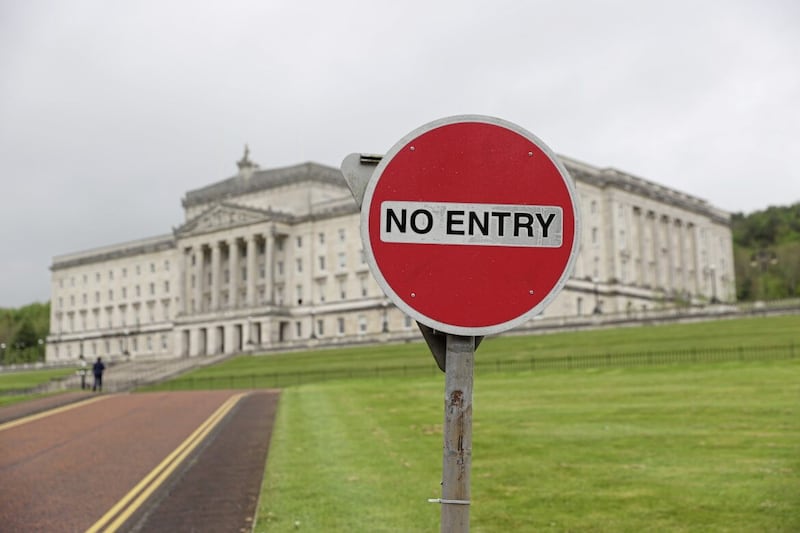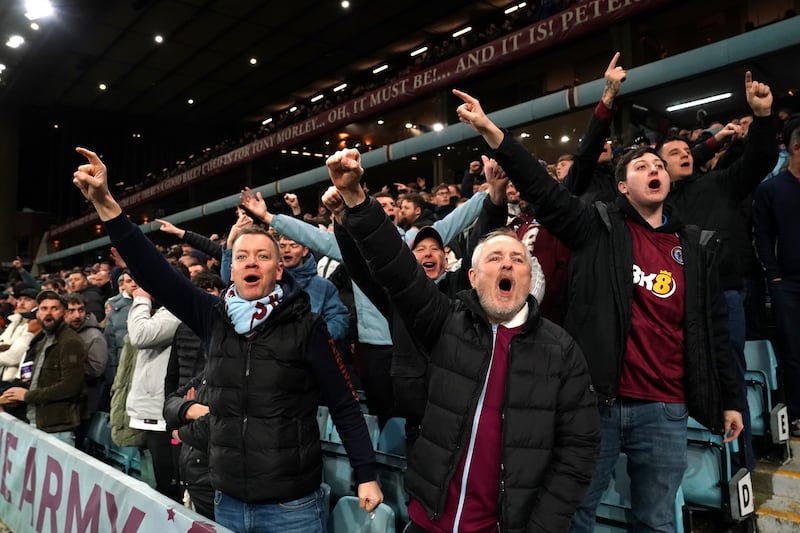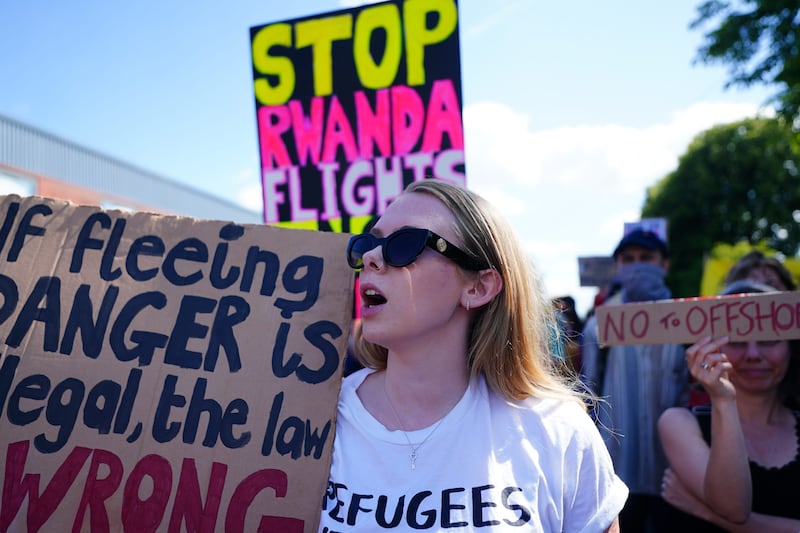Who are Sinn Féin?
Sinn Féin is the largest political party in Northern Ireland and the only party which has elected representatives in both the Northern Ireland and Republic of Ireland governments.
Key Facts
Name: Sinn Féin
Constitutional status: In favor of Irish unity (a united Ireland)
Political Strength: Members of Parliament (7), Stormont Assembly Members (27), Northern Ireland Local Government Councillors (144) Irish Parliament TDs (36)
First Preference Votes in the Assembly election 2022: 250,388 (29%)
Northern Ireland political position: The largest party
Party leader: Mary Lou McDonald
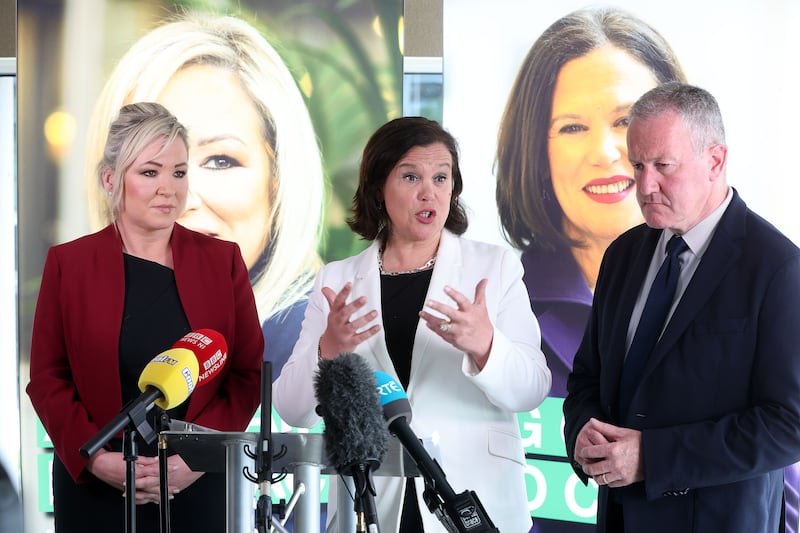
Who is the Sinn Féin leader and president?
Mary Lou McDonald is the president of Sinn Féin. Mrs McDonald leads the party’s 36 TDs in the Dail in the Republic of Ireland while deputy leader Michelle O’Neill leads Sinn Féin as the largest party in the northern state.
Do Sinn Féin have seats in the Dail and MPs in the House of Commons at Westminster?
The party has 36 TDs in the Dail in the Republic of Ireland. Sinn Féin MPs continue to abstain from taking their seats in the British House of Commons at Westminster in London.
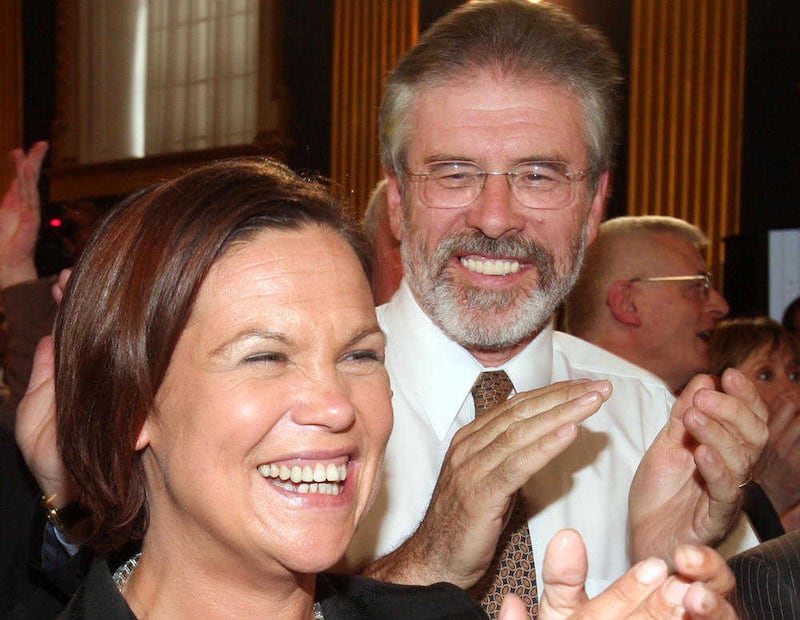
Sinn Féin founder and leadership
There have been 15 presidents of Sinn Féin but only three presidents of Provisional Sinn Féin (PSF) when it split from Official Sinn Féin, which later changed its name to the Workers Party. Ruairi O’Bradaigh was selected as the PSF’s first president in 1970. He held the position until 1983 when he resigned due to dissatisfaction among party activists in Northern Ireland. He was replaced by Gerry Adams, who was Sinn Féin president for 34 years until he retired from politics in 2018. In February 2018 Mary Lou McDonald was selected at a special Sinn Féin convention to replace Gerry Adams as party leader. She became only the second woman to lead Sinn Féin, following Margaret Buckley who had led the party from 1937 to 1950. Ms McDonald remains the leader of Sinn Féin in the summer of 2023.
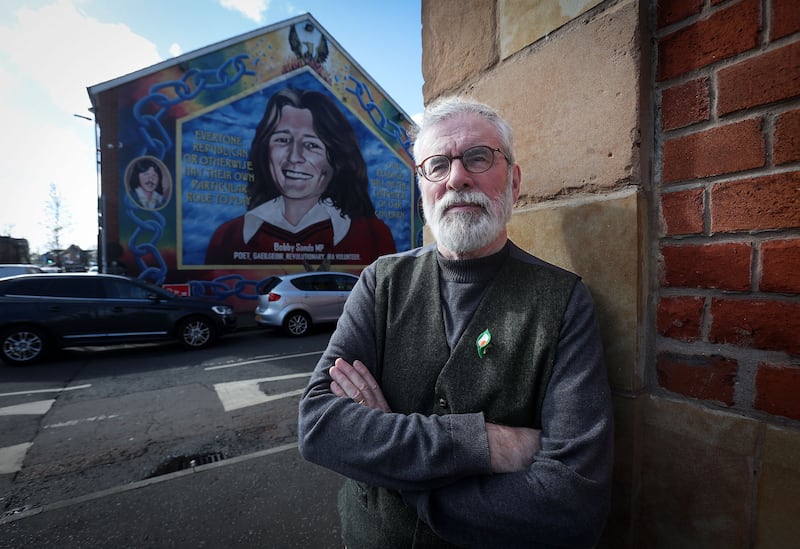
Sinn Féin’s early role in Northern Ireland
The history of Sinn Féin is arguably the most controversial in Northern Ireland politics. The party was formed on an all-Ireland basis in Dublin in November 1905 and was closely associated with the IRA and the Easter Rising in 1916 and the Irish War of Independence which ultimately led to both the formation of the Irish Republic and the Northern Ireland state.
In the first 60 years of the unionist-dominated northern state, Sinn Féin was often without political representation with a policy of abstentionism from both the ruling British Westminster parliament and Leinster House in the Republic of Ireland.
With the outbreak of the Northern Ireland Troubles, it continued its close association with the newly re-emerged IRA (Irish Republican Army), refusing to condemn the paramilitary group’s violent actions. Many, but not all, prominent Sinn Féin leaders had served terms in prison for IRA offences.
Following the H Blocks/Maze Prison Hunger Strikes in 1981 and the election of hunger striker Bobby Sands and other protesting prisoners Sinn Féin began its effective introduction into Northern Ireland politics.
In 1983 Alex Maskey became the first Sinn Féin councillor elected to Belfast City Council. In the following years the party steadily increased its political representation across Northern Ireland. In 1986, under the political leadership of Gerry Adams and Martin McGuinness, Sinn Féin dropped its abstentionist policy of not taking Dail (parliamentary) seats in the Republic of Ireland.
However, republican paramilitary’s campaign of violence in Northern Ireland continued with critics branding Sinn Féin the political wing of the IRA.
Throughout the late 1980s and early 1990s Gerry Adams and SDLP leader John Hume engaged in secret talks aimed at persuading the Irish republican movement to abandon its armed campaign of violence and embrace entirely democratic politics to achieve its aim of a united Ireland.
In August 1994 the PIRA announced a ceasefire and an end to violence. The ceasefire broke down in 1996 but was restored in July 1997.
Read more:
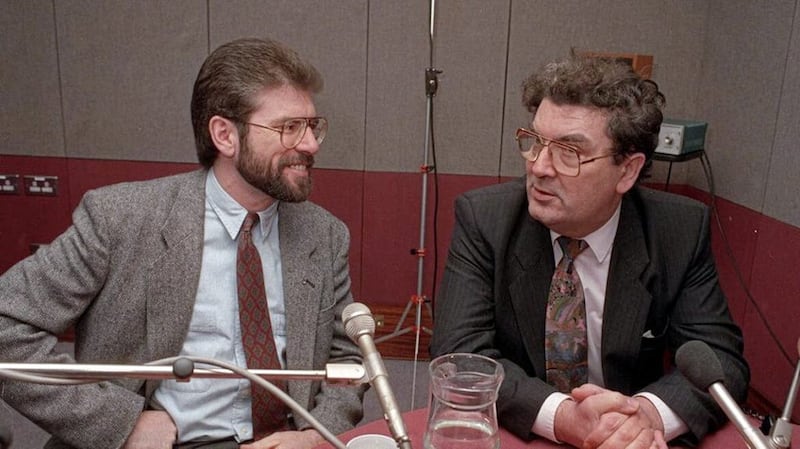
Did Sinn Féin support the Good Friday Agreement?
Sinn Féin did take part in negotiations leading up to the Good Friday Agreement/ Belfast Agreement including the formation of an Assembly at Stormont parliament in 1998, when it won 18 seats and 17.63% of first preference votes.
While a power-sharing Executive was formed, including Ulster Unionist Party (UUP), Social Democratic Labour Party (SDLP), Democratic Unionist Party (DUP), Sinn Féin and Alliance ministers, the DUP refused to attend meetings because of the presence of Sinn Féin. Over the next decade the Stormont parliament had a stop-start life with unionists withdrawing from the Assembly in protest at the IRA’s refusal to decommission weapons. From 2002 until 2007 Stormont was suspended by unionist parties when Sinn Féin offices at Stormont were raided by the PSNI over allegations of a republican spy ring operating within government. In July 2005 the PIRA (Provisional IRA) announced that it had decommissioned all its weapons.
Read more: Historic moment Martin McGuinness shook hands with Queen Elizabeth
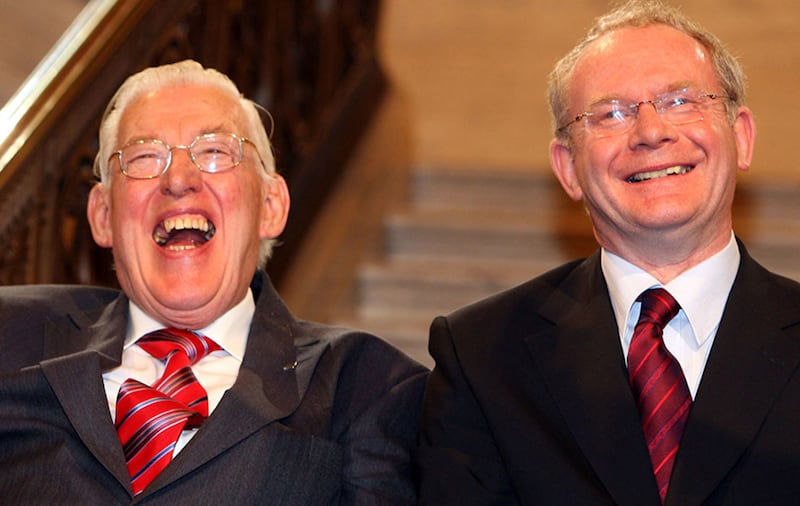
In March 2007 Sinn Féin and the DUP caused a political storm when the two parties agreed to form a power-sharing executive. The DUP’s Ian Paisley became First Minister with Sinn Féin’s Martin McGuinness Deputy First Minster.
Read more:
- Martin McGuinness - A life in pictures
- How Martin McGuinness and Ian Paisley forged an unlikely friendship
The power-sharing Executive with the DUP and Sinn Féin as the two biggest parties lasted for 10 years until January 2017 when Martin McGuinness withdrew as Deputy First Minister over then DUP leader Arlene Foster’s refusal to step down as First Minster while her party’s role in a scandal involving government funding for a green energy scheme (Renewable Heat Incentive) was investigated.
Stormont remained in suspension for three years until it was restored in January 2020. However, in February 2022 the Northern Ireland parliament was again put into mothballs when DUP First Minister Paul Girvan resigned in protest at the British government’s Brexit border arrangements with the EU.
Fresh assembly elections in May 2022 saw Sinn Féin becoming the largest political party in Northern Ireland for the first time. However, the DUP still refused to re-enter Stormont.
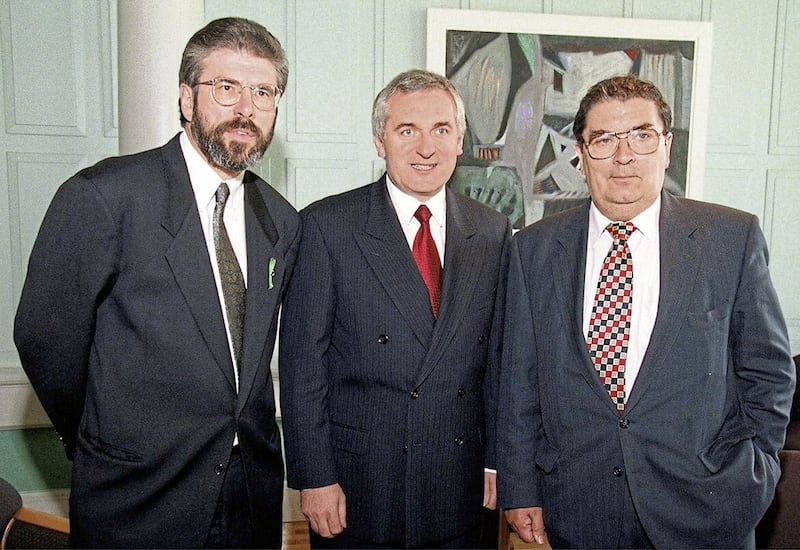
Did Sinn Féin support Brexit?
Sinn Féin describes itself as being “critical but supportive” of the EU. It is opposed to European Union integration policies but opposed the British government’s Brexit.
What are Sinn Féin’s main policies?
Sinn Féin is the only all-Ireland political party on the island of Ireland and has called for a border poll to decide on northern reunification with southern Ireland. It supported changes in the law in 2019 which made terminations legal in all circumstances within the first 12 weeks of pregnancy. The party also supported changes to laws legalising LGBT rights and same-sex marriage. It is widely speculated that Sinn Féin will become the largest party in the Republic of Ireland at the next general election and enter government in the south for the first time in 100 years where access to social housing is expected to be a major policy.
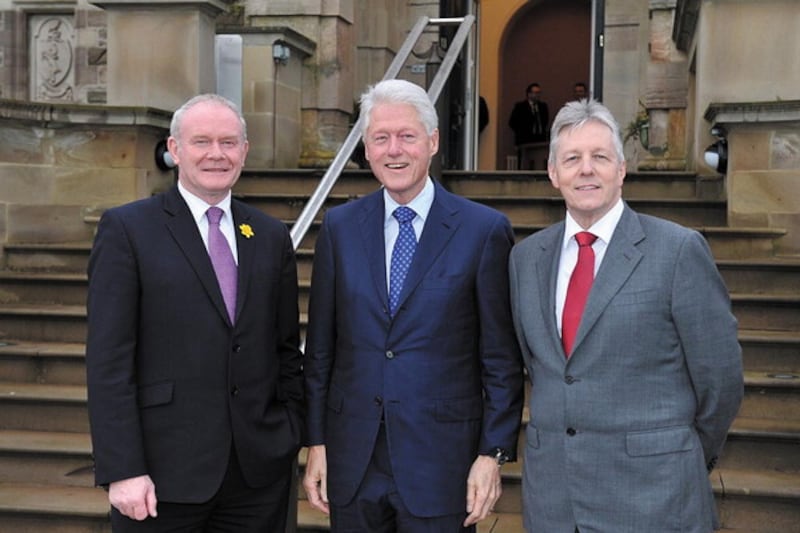
Were Sinn Féin members attacked during the Troubles?
The Sutton database of Troubles related deaths records 29 Sinn Féin party members having been killed during the Troubles. Twenty five of those party members were murdered by loyalist paramilitaries, three others were shot dead by an off-duty policeman, while two Sinn Féin members were shot dead by the Official IRA as part of a feud in the early 1970s. A large number of other party members, including one-time leader Gerry Adams, were also shot and seriously injured during the northern conflict.


